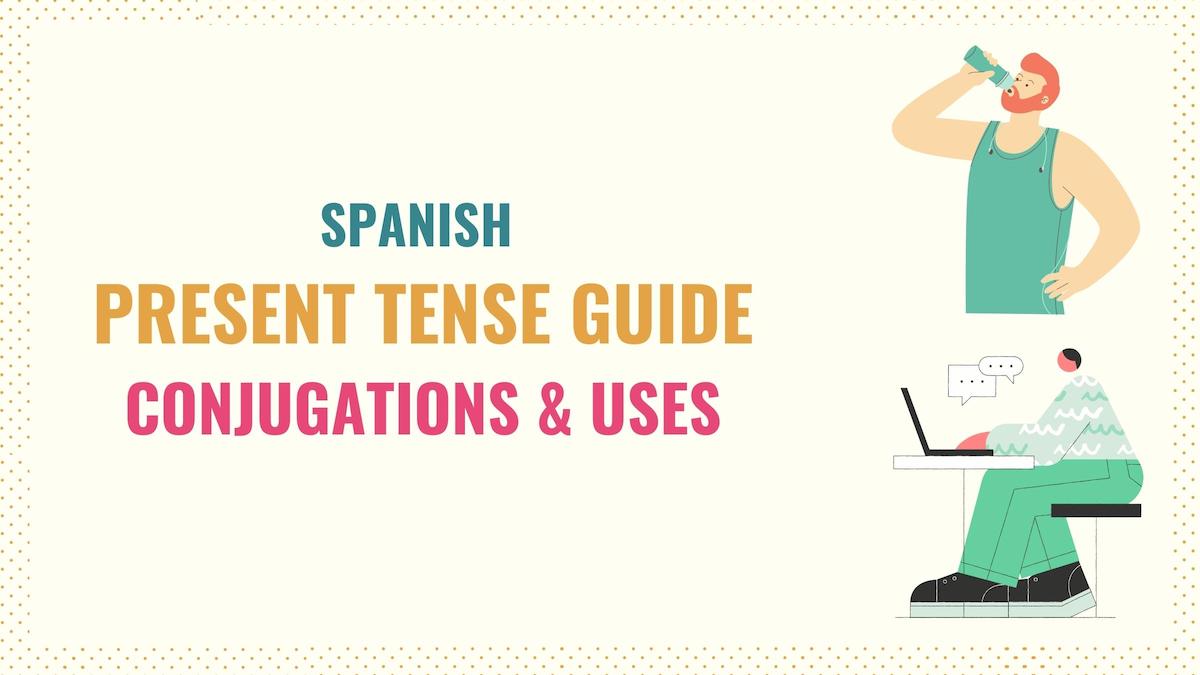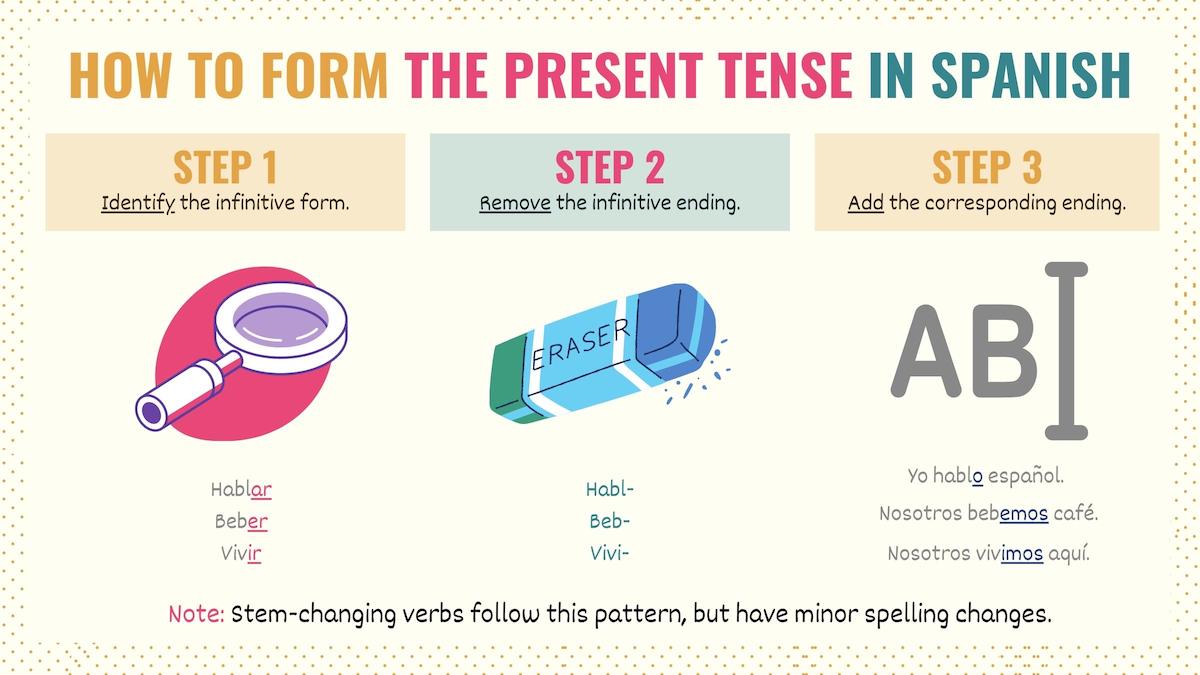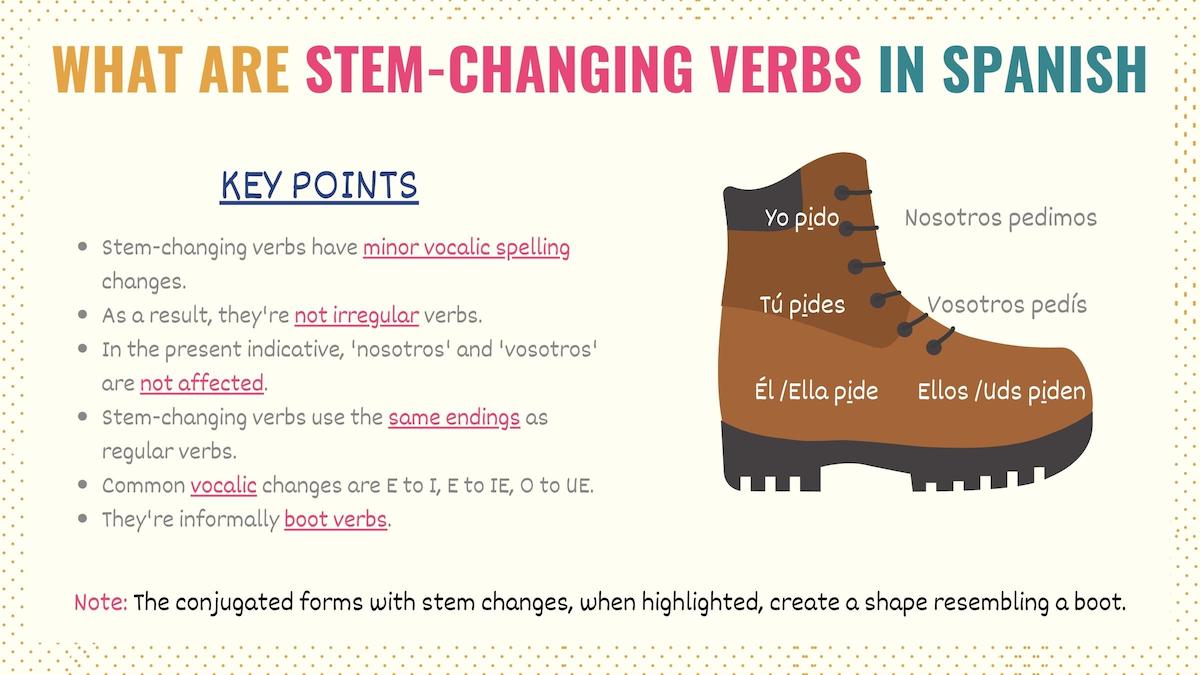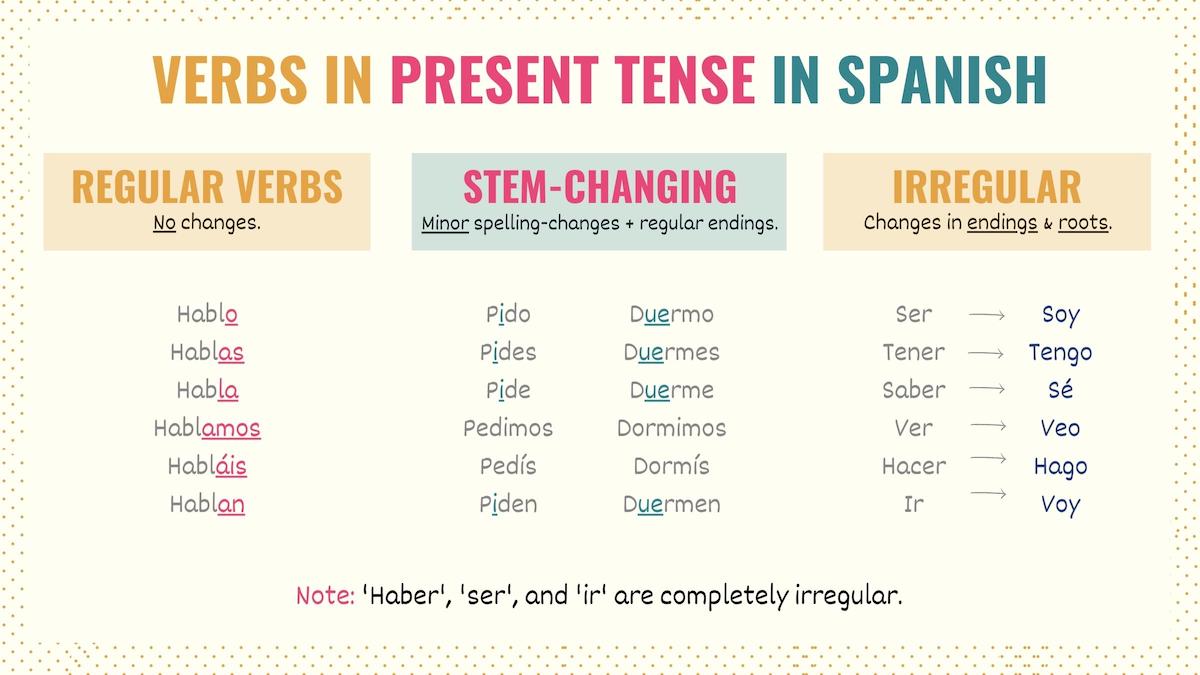

The steps to conjugate a regular verb in the Spanish present tense are:

The infinitive form of a verb defines the endings you must use when conjugating. For instance, the present endings in Spanish are:
| Person | AR Verbs | -ER Verbs | -IR Verbs |
|---|---|---|---|
| Yo | Hablo | Bebo | Vivo |
| Tú | Hablas | Bebes | Vives |
| Él / Ella Usted | Habla | Bebe | Vive |
| Nosotros | Hablamos | Bebemos | Vivimos |
| Vosotros | Habláis | Bebéis | Vivís |
| Ellos / Ellas Ustedes | Hablan | Beben | Viven |
Here are some conjugation tips for regular verbs in the present tense:
Take Note: As you can see in the conjugation chart above, in Spanish, each person has its own conjugation ending. Because these suffixes state who we’re talking about, Spanish subject pronouns are often omitted in a sentence.
Now that you know the rules for regular verbs in Spanish, let’s learn what to do with stem-changing and irregular verbs.
Many verbs in present form have minor spelling changes to maintain or ease the pronunciation or follow orthographic rules. These are known as Spanish stem-changing verbs.
Take the verb dormir as an example:
| Person | Conjugation |
|---|---|
| Yo | D ue rmo |
| Tú | D ue rmes |
| Él / Ella / Usted | D ue rme |
| Nosotros | Dormimos |
| Vosotros | Dormís |
| Ustedes / Ellos / Ellas | Duermen |
Dormir (to sleep) has an O to UE stem. In other words, the letter o in the root (dorm) becomes ue (duerm) for all subject pronouns except ‘nosotros’ and ‘vosotros’.
Leaving these changes aside, you’ll use the endings for regular verbs.
Here are some examples of verbs with stem-changes in the present tense:
O to UE
E to IE
E to I
CER to ZC (only for ‘yo’)
*Note: As you’re about to see, tener and decir are irregular for the first-person singular (yo).
To learn more about this topic, check my guide on stem changing verbs.
Take Note: Spanish teachers call stem-changing verbs ‘boot verbs’ because the spelling changes don’t affect all the persons in the conjugation table. You can draw the shape of a boot around the subject pronouns that do have stem changes.

In Spanish, irregular present tense verbs have significant changes in their root and, sometimes, their endings.
These are the irregular verbs in the present tense:
Although their conjugations look random, these irregular verbs have some distinctive patterns that can make them easier to learn.
Let me show you what I mean.
Verbs with ‘go’ ending for ‘yo’
Aside from this, most of these verbs are regular in the other subject pronouns. Tener and decir are also stem-changing verbs. Finally, oír is a special case that requires you to replace the ‘i’ for a ‘y’ for the pronouns ‘tú’ and the third-person singular and plural.
Verbs with ‘oy’ ending for ‘yo’
From this list, ir and ser are irregular for all subject pronouns. The verb estar in the present tense has accented endings.
Verbs with unique patterns for ‘yo’:
Take Note: By grouping irregular verbs like this, you only have to worry about memorizing a couple of forms.

Here are some resources that can help you master the present indicative tense:
As a beginner, you should also learn basic nouns and adjectives to make your sentences richer and more expressive. Once you’re ready, you can test your knowledge by taking this quiz.
The present indicative tense is the foundation for learning more complex tenses. So, I’ve compiled a PDF with its uses and conjugations. You can download it by clicking on the button below.